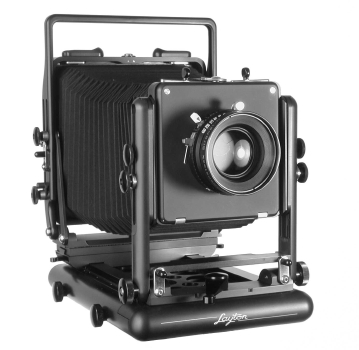

Stuff
Once you decided, and likely purchased your large format camera and lenses, you need the rest of the stuff to actually start taking photographs. And there it gets even fuzzier as there are lots of small companies making stuff and many photographers adapting stuff from other ourdoor activities, such as fly-fishing, hiking and backpacking, kayaking, etc. You have to be somewhat innovative and inventive when finding and getting stuff, but there are numerous small companies producing great specialized stuff.
What stuff you ask. First and obvious, film and film holders. You need to determine what black and white film and what color slide or negative film you want to shoot. Remember it's not cheap and the learning curve - remember exposure and zone system - is long with many mistakes. Film holders are generally of two common types, one-two exposure holder and ready-packs. The former is cheaper but more work, and the latter is easier but more expensive.
Second is a dark cloth and loupe for focusing. Some use homemade dark clothes and loupes are generally available at camera shops. I can only suggest to buy the best loupe you can afford, in short don't short change yourself or your images with a cheap plastic loupe. Most choose a 4x to 8x depending on personal choice.
Third is filters. This is a controversial topic in photography, not just large format photography, so I'll leave it to you to do your research. You can use screw-in filters or a filter system, you have to know the filter size that works for your lenses. You don't need a lot of filter, usually center filters for wide-angle lenses, often required, some type of UV or Sky filters, full or graduated neutral density filters, and filters for black and white photography, such as red or yellow.
Fourth is a light meter. This is something not normally discussed in other format because cameras have built in light meters for manual or automatic reading and exposure. The two most common brands are Minolta, Gossen, and Sekonic. This is a personal preference and familiarity for features and use but it is recommended you have one that does both incident and reflected light readings, the latter with various spot attachments, usually 5 or 10 degrees.
Fifth is other stuff, such as cases for lenses, camera(s), ground glass, filters, film holders and common carry bags for cable releases, loupes, etc., carrying case, often a backpack or large hard/soft case, and the usual stuff such as notebooks, tools, etc. And lastly don't forget a changing tent if you plan to swap film in the field.
After you have our camera, lenses and stuff, have a great adventure. I plan to do so.
Please use the contact link to send e-mail.